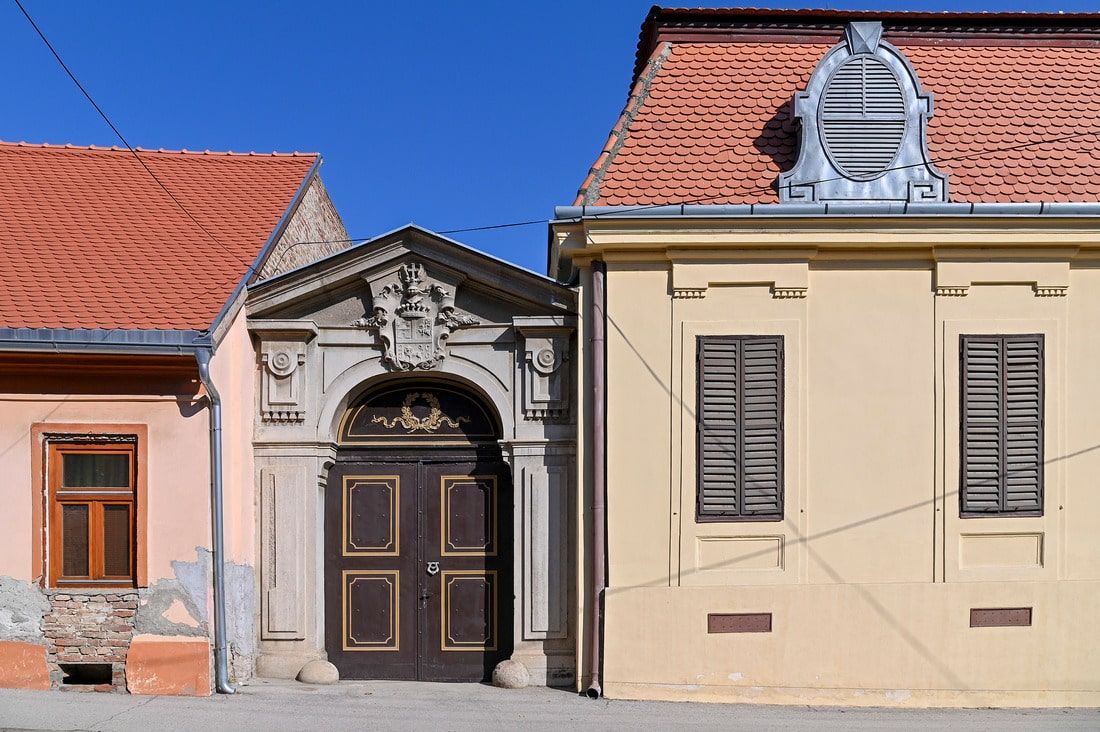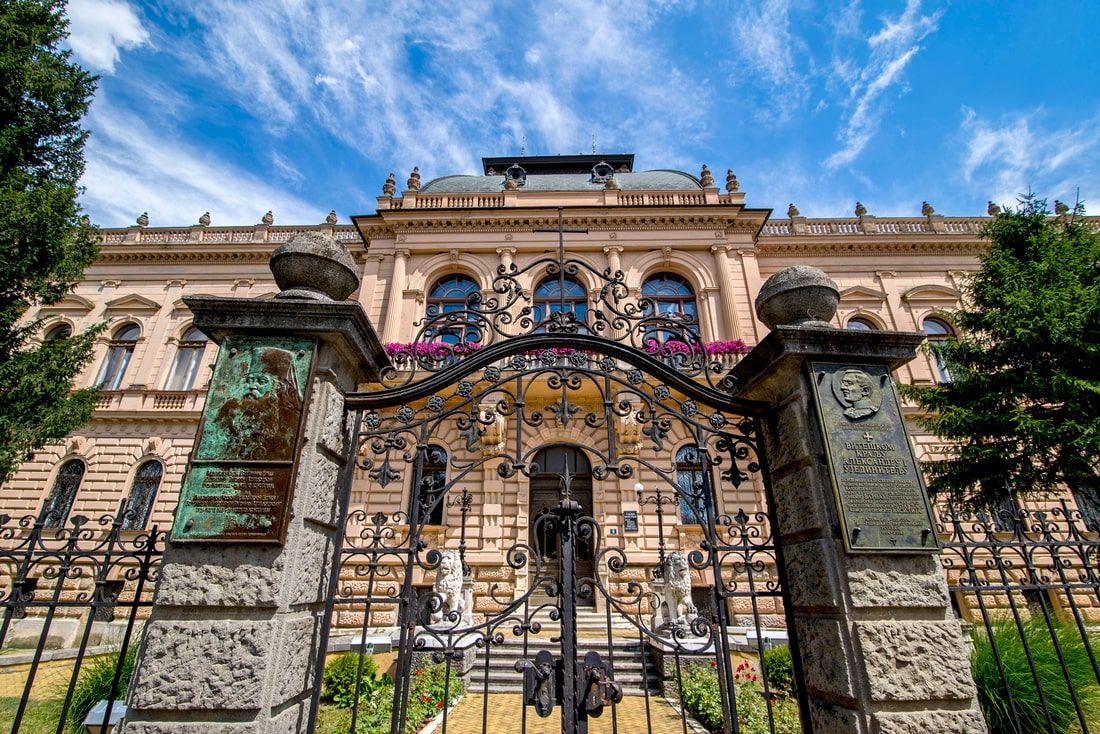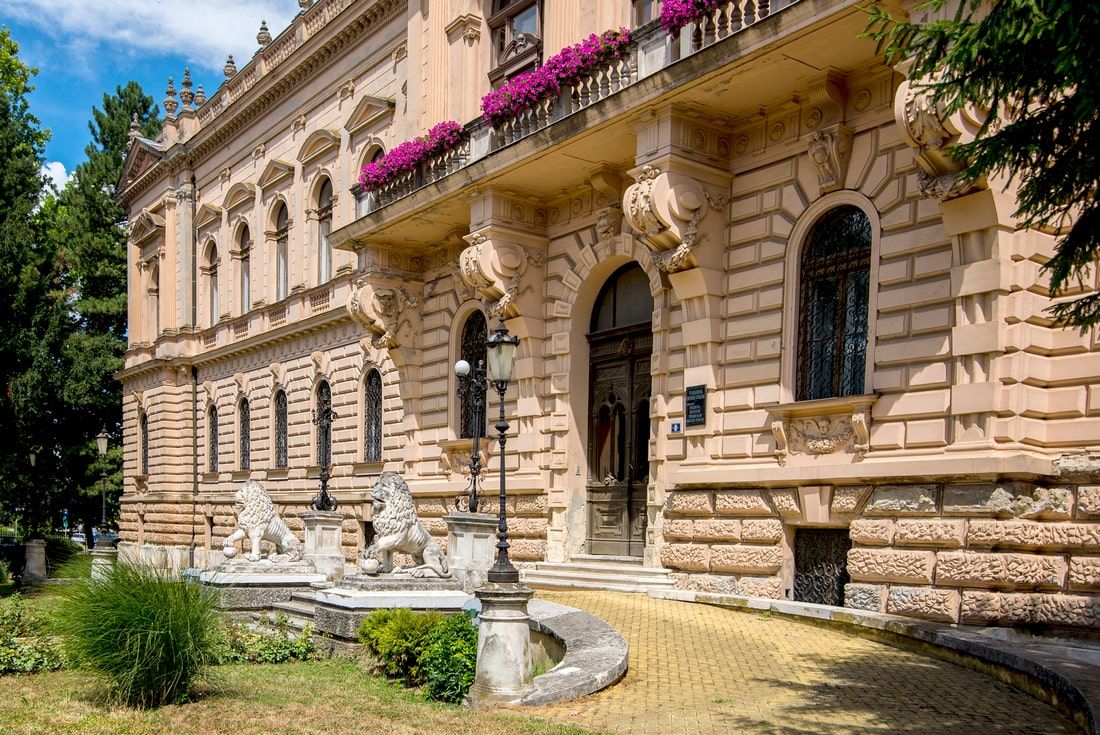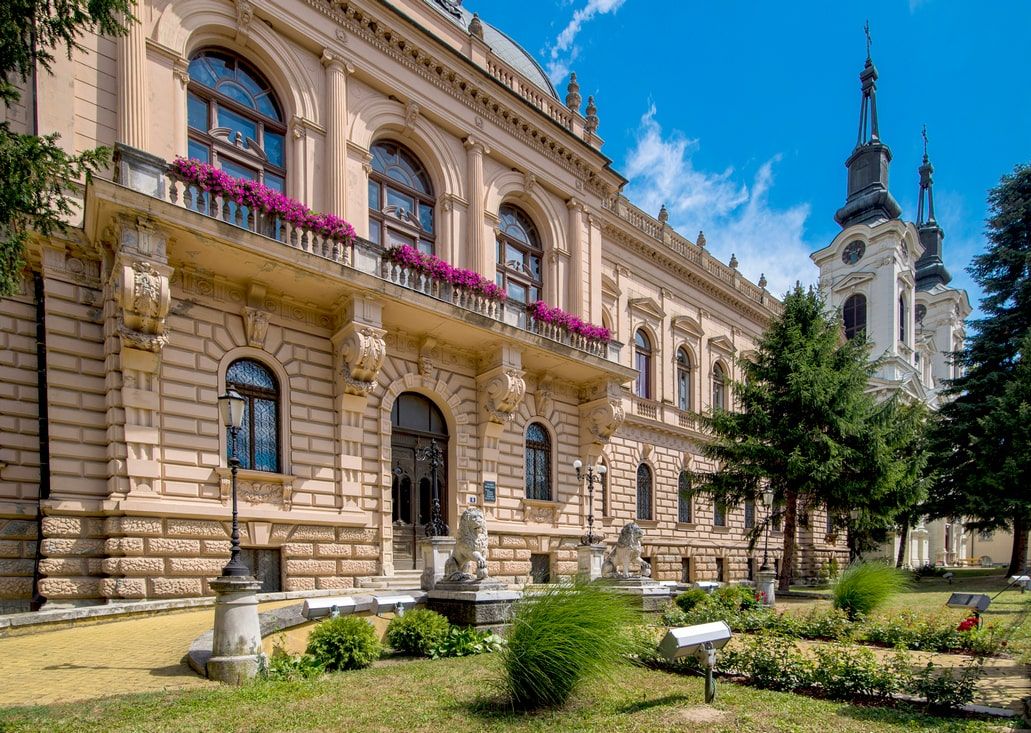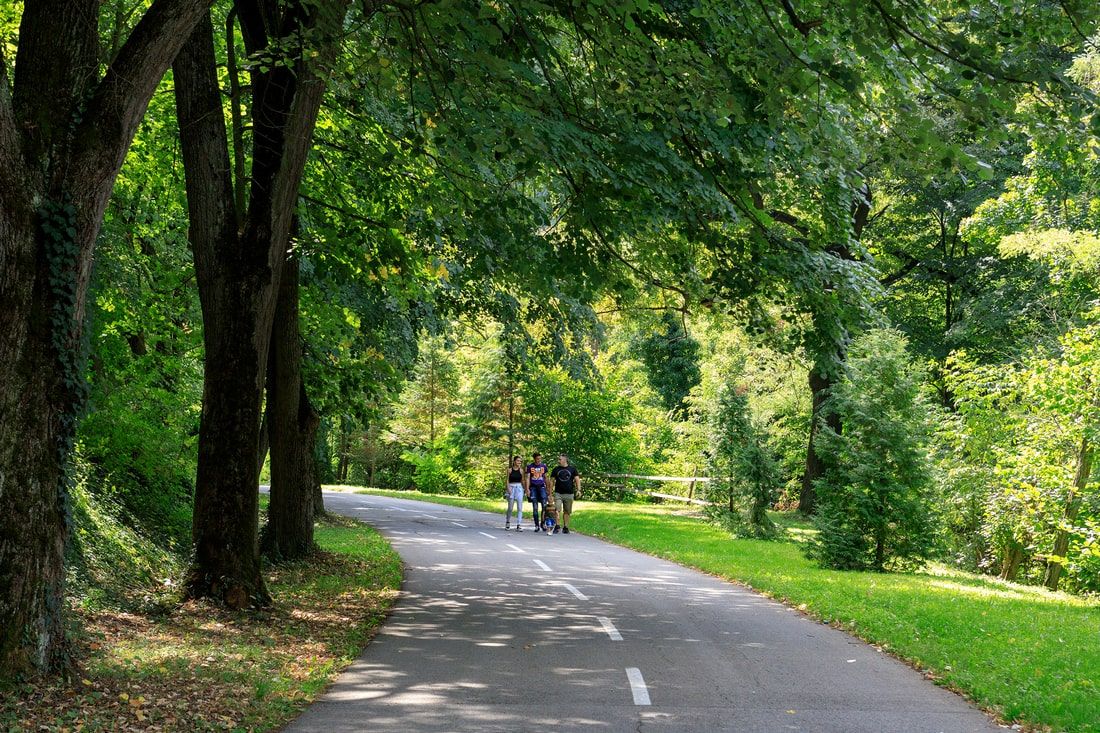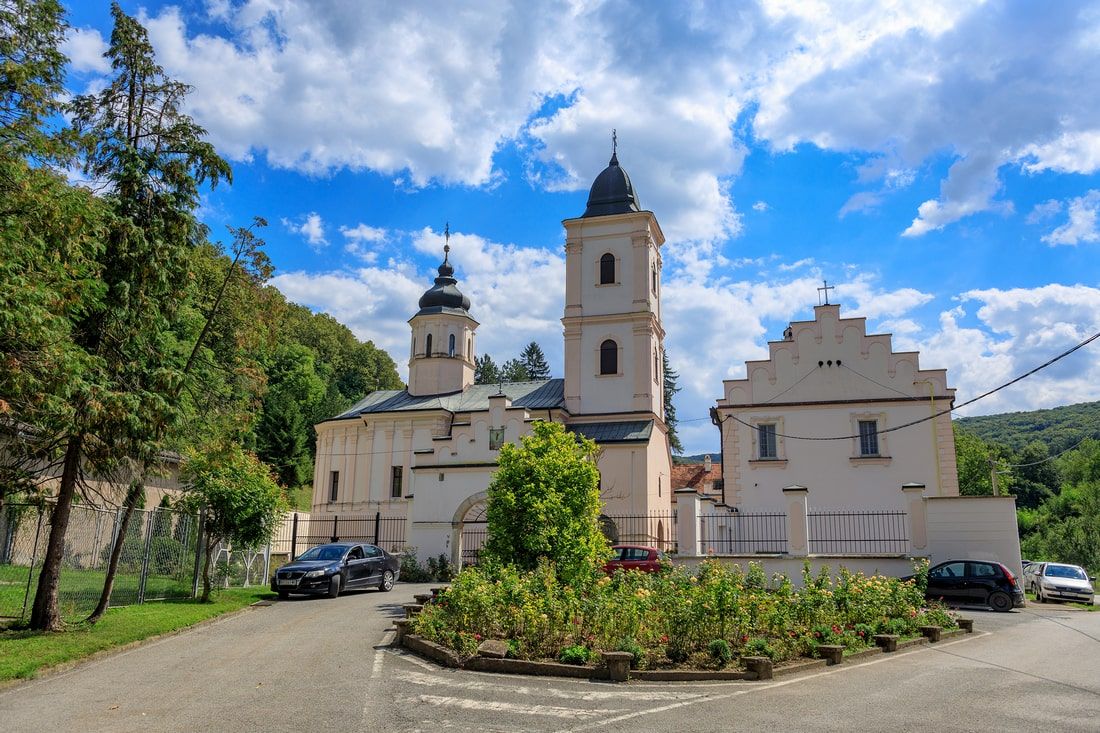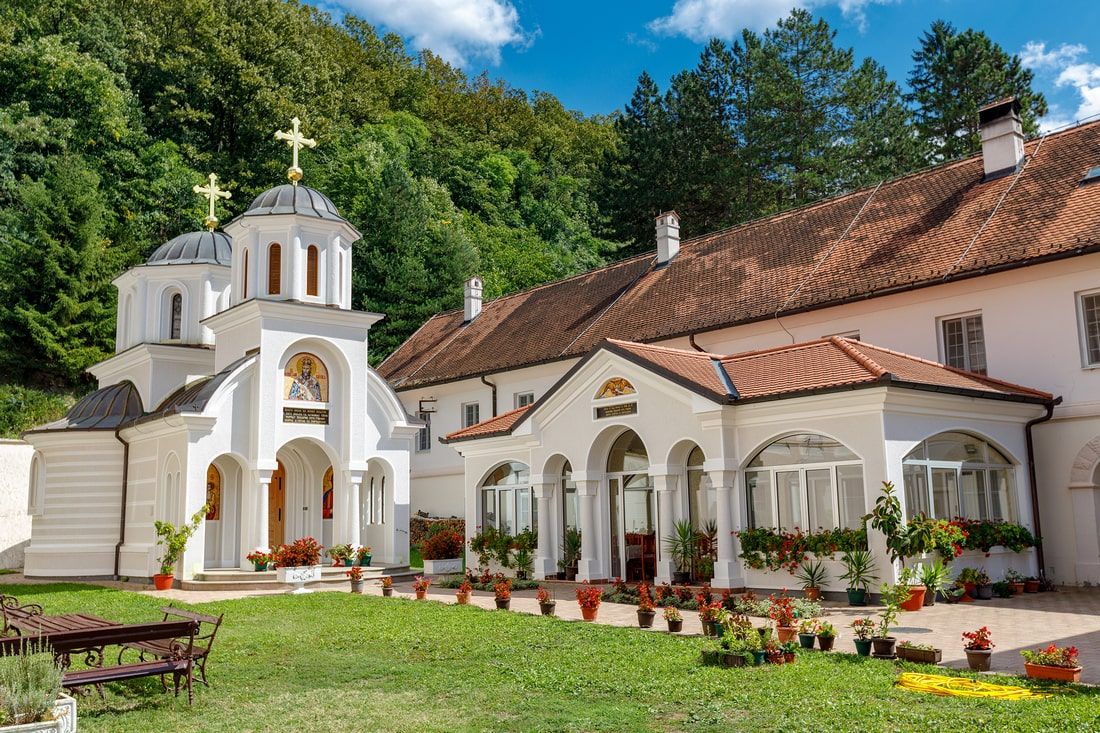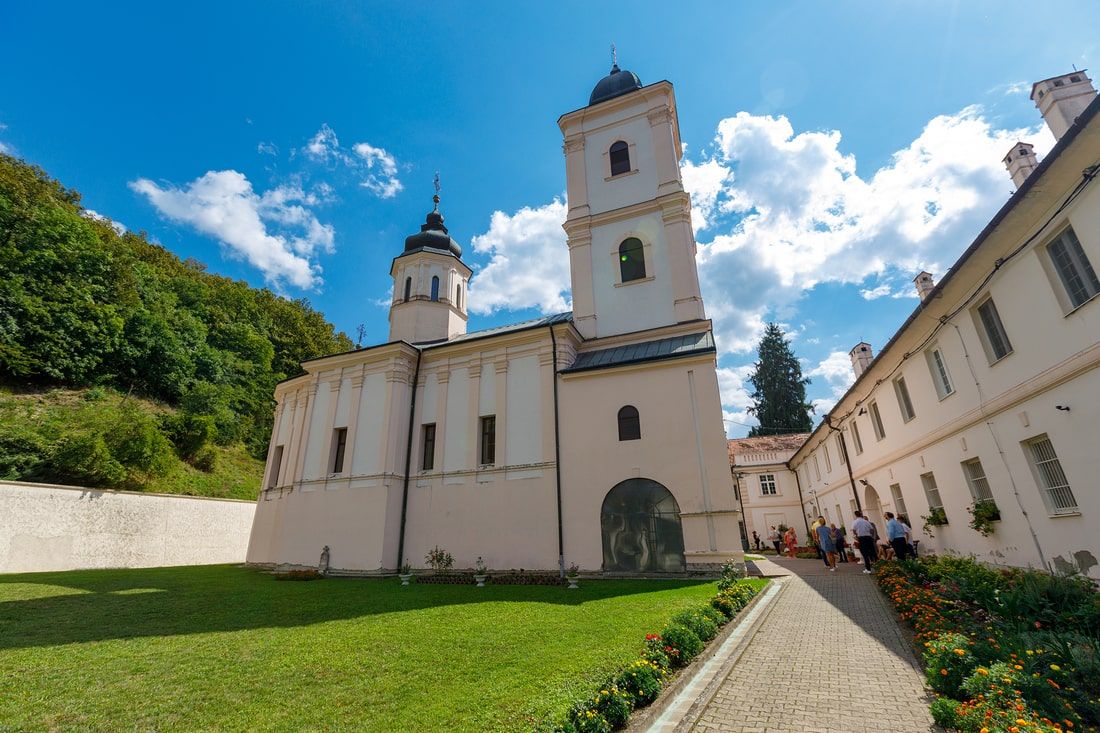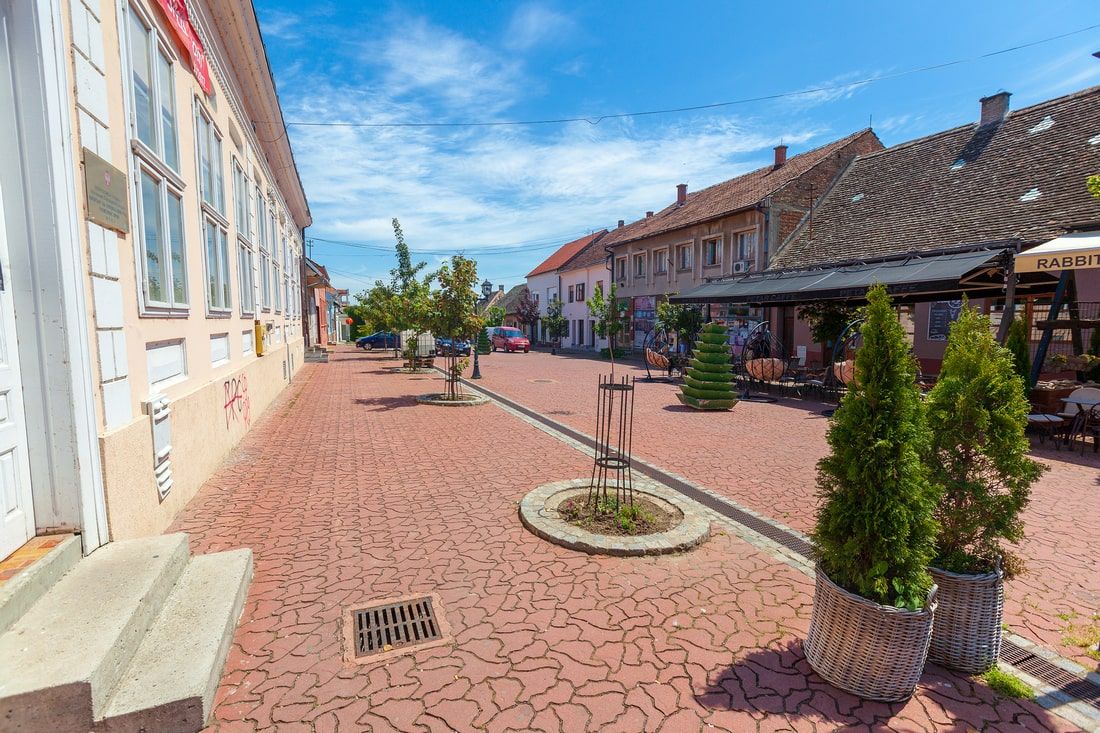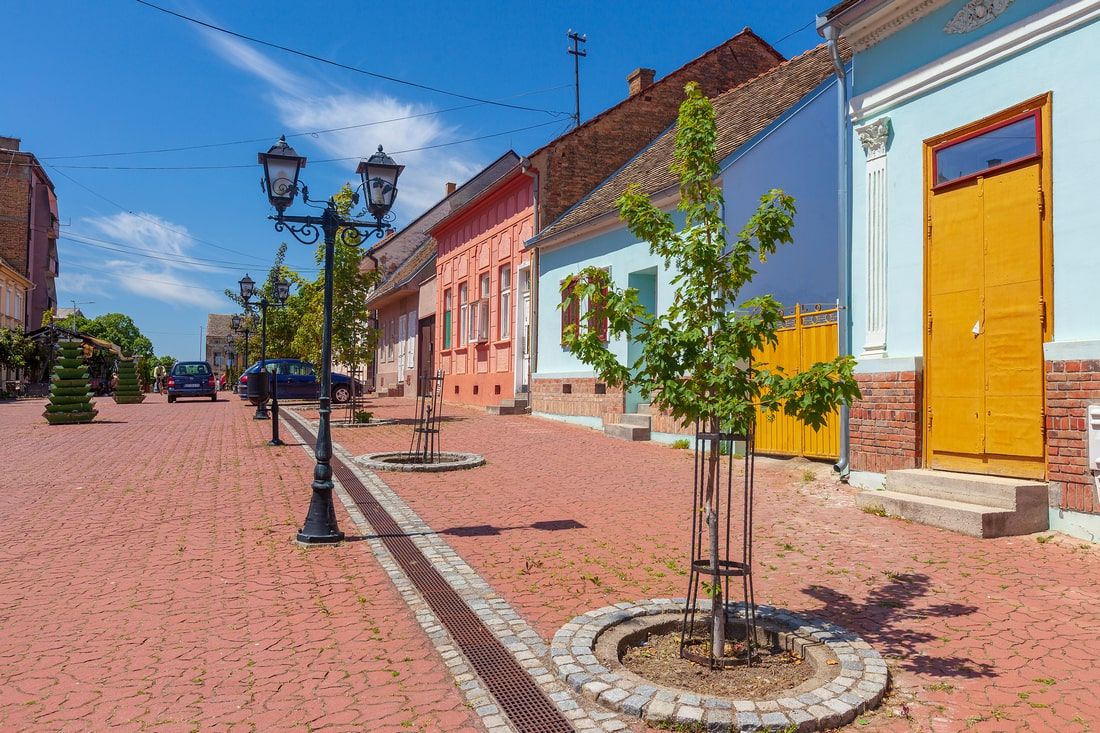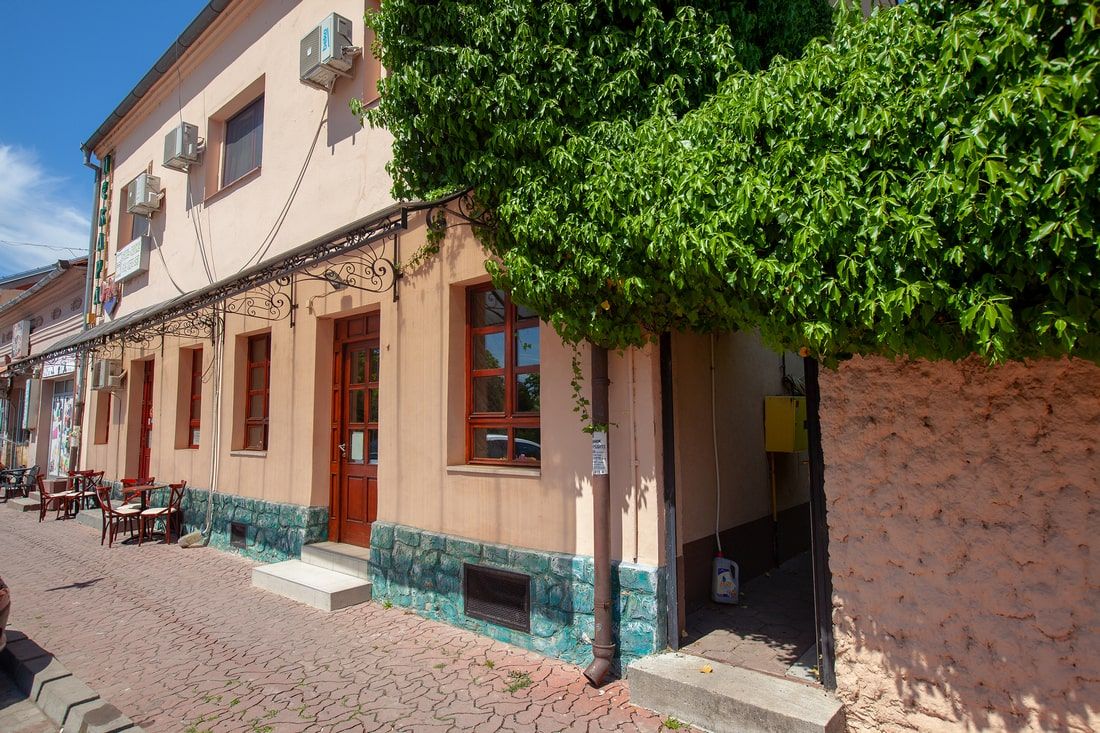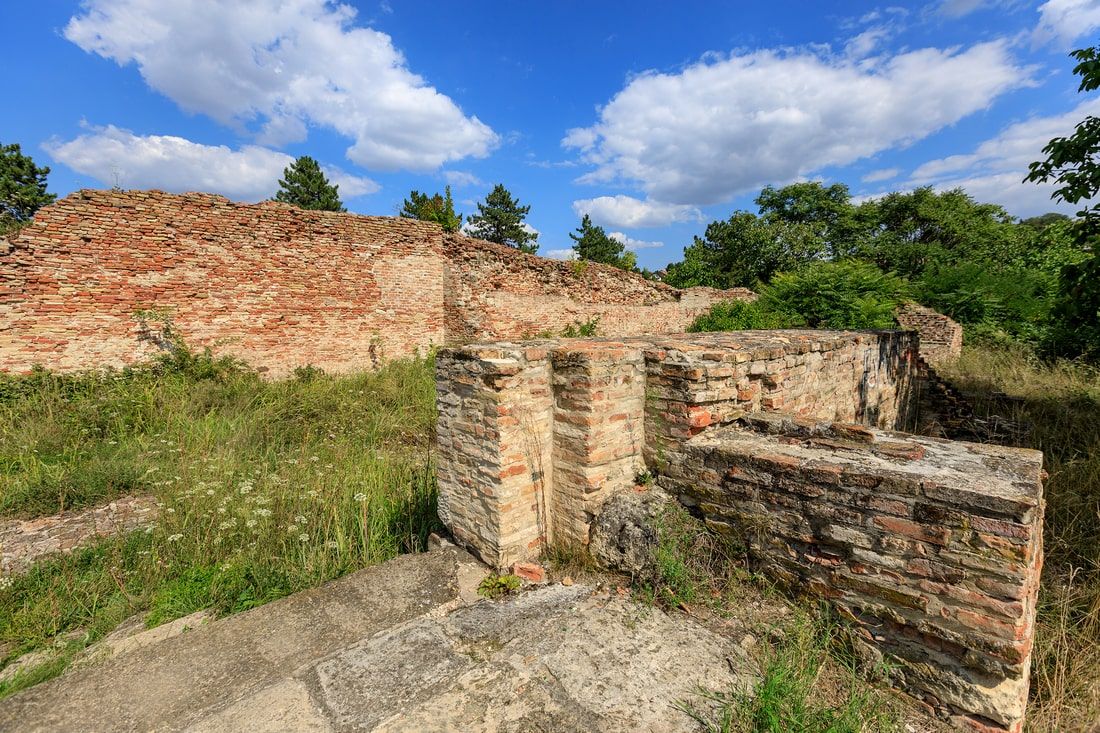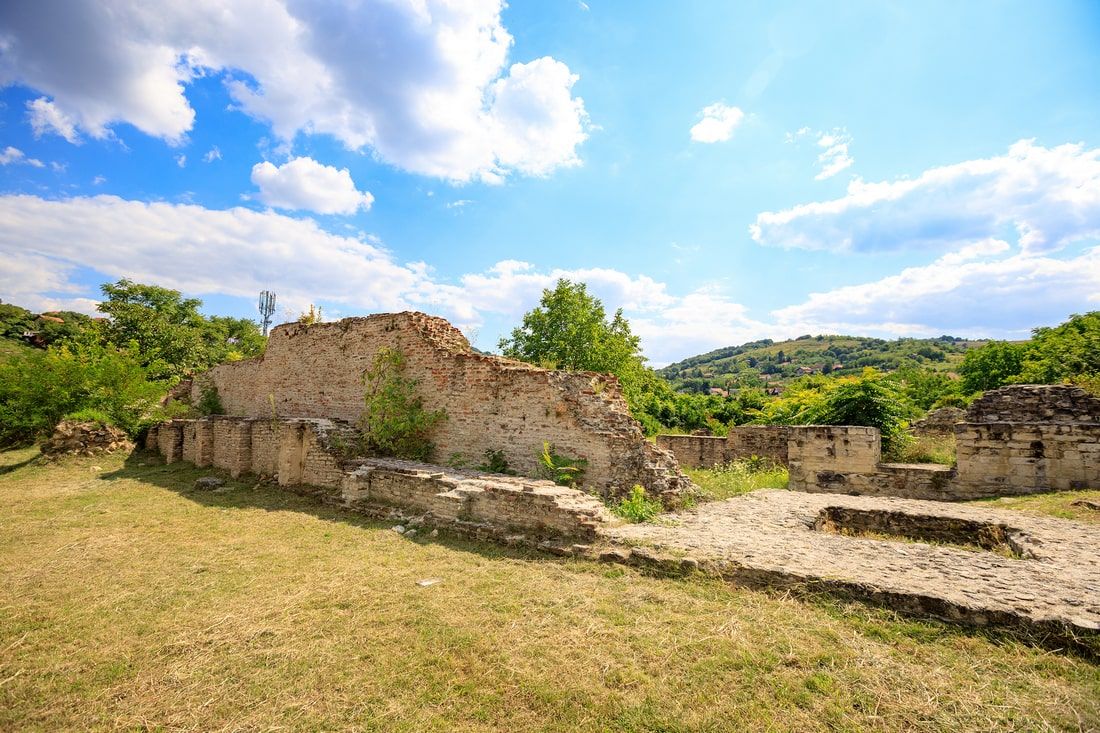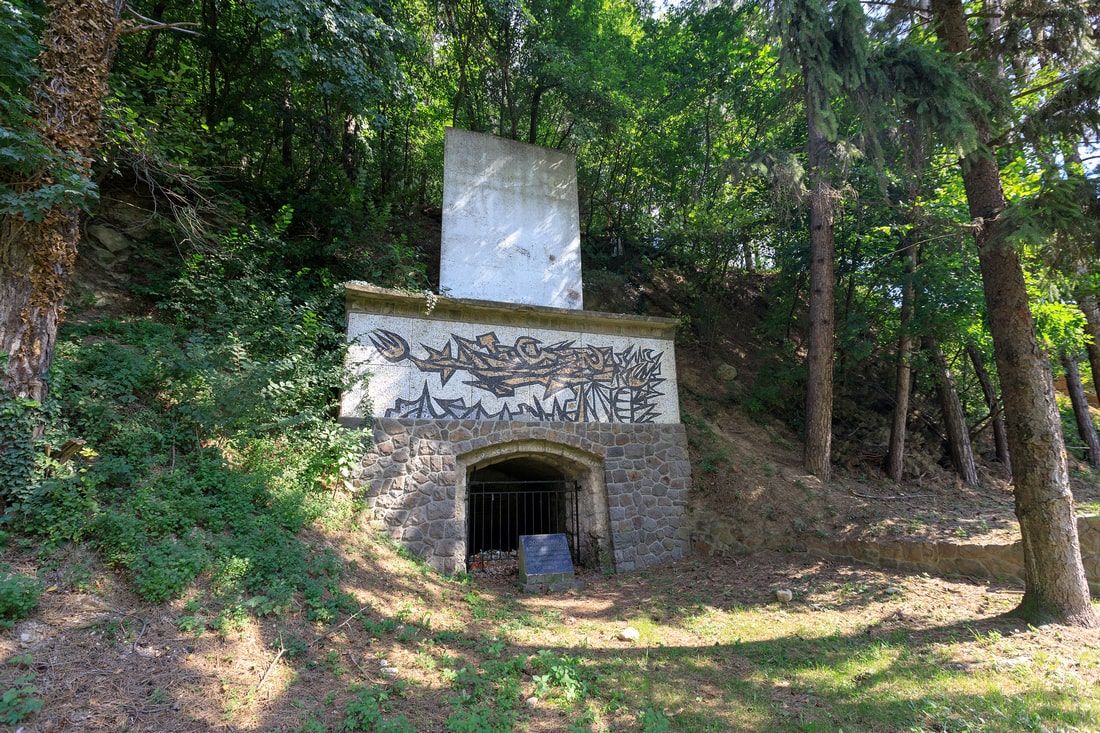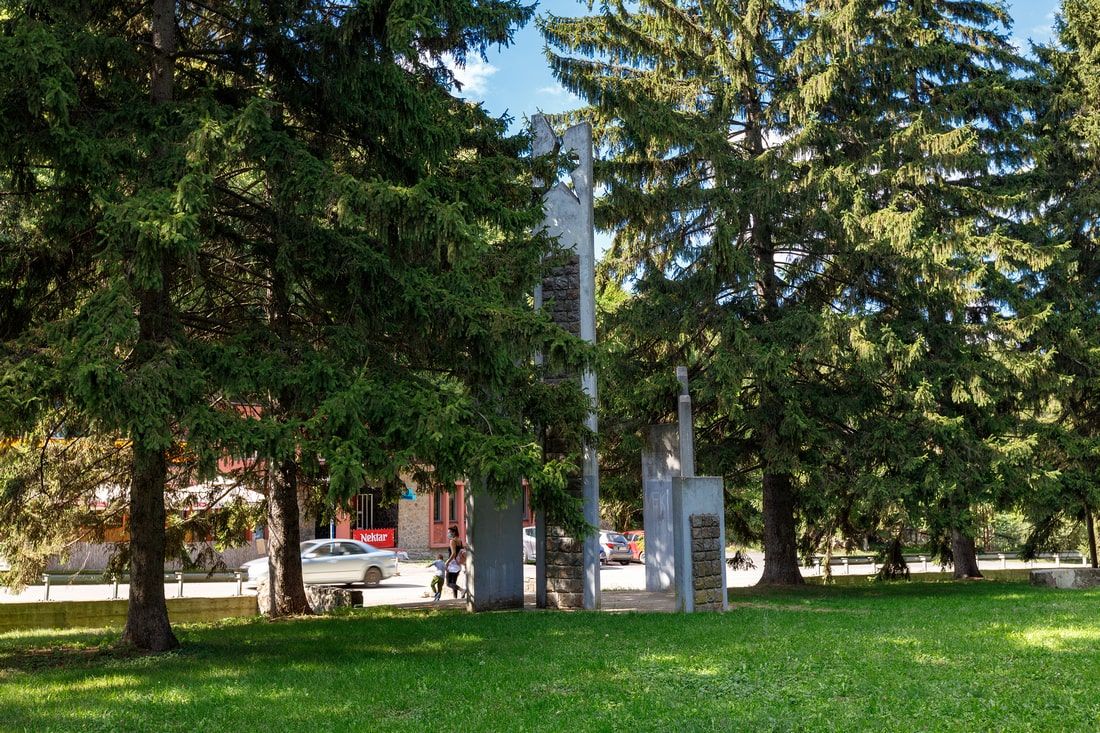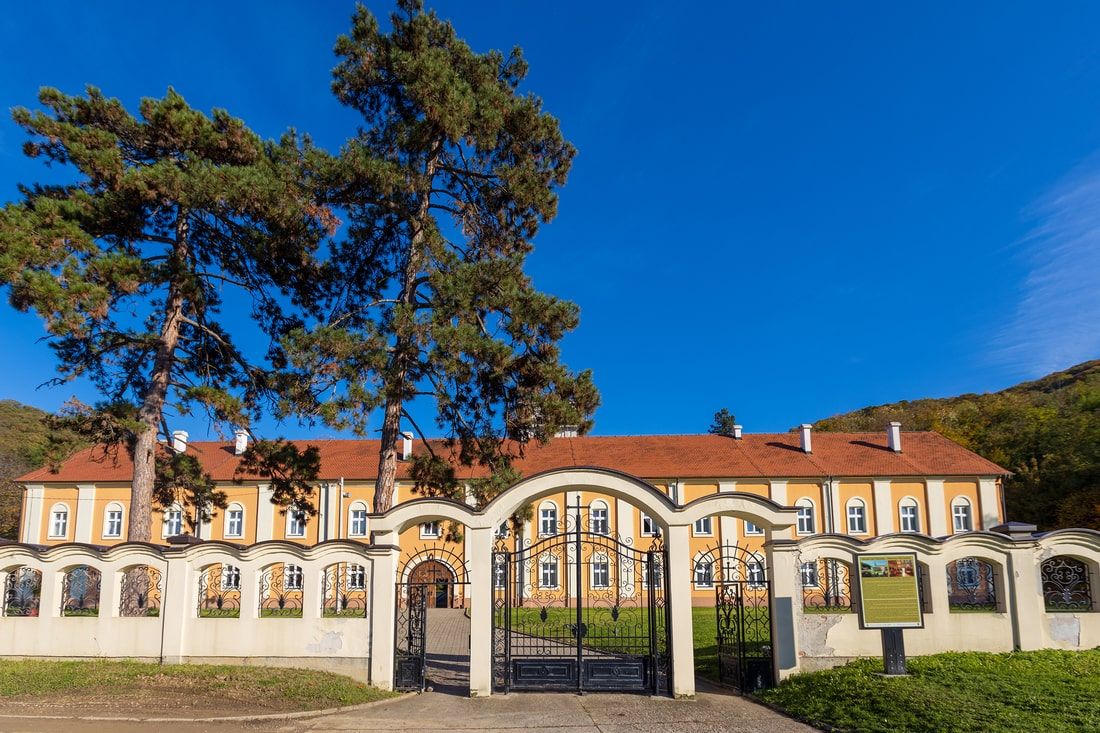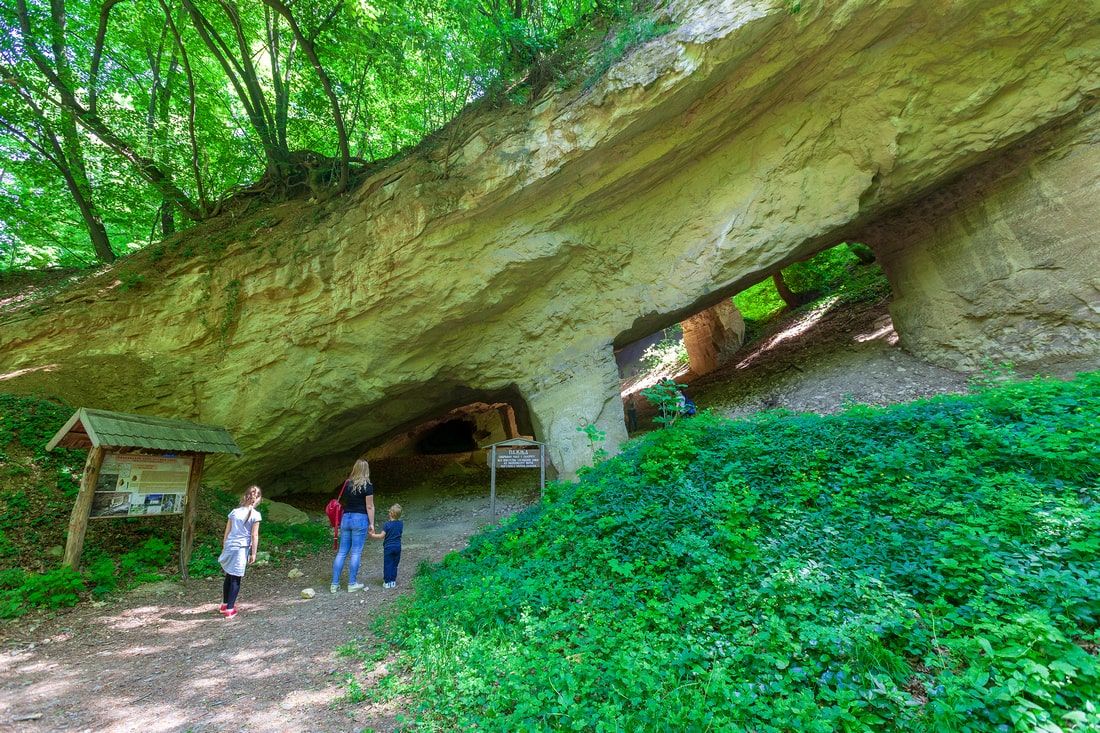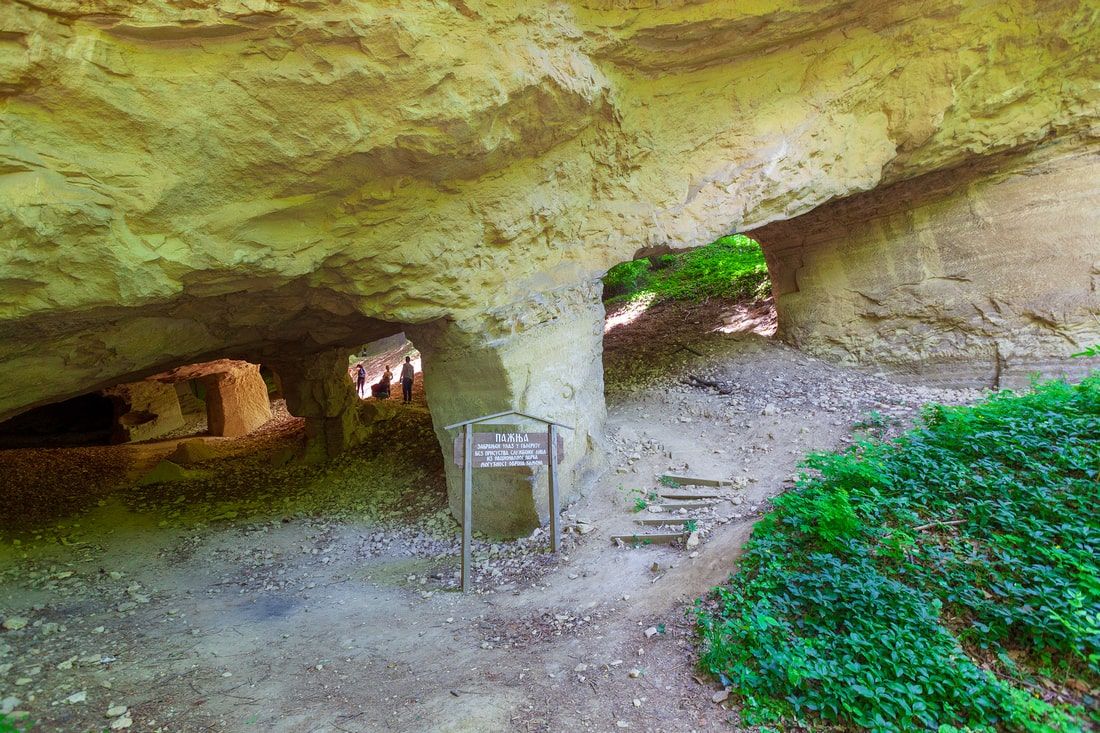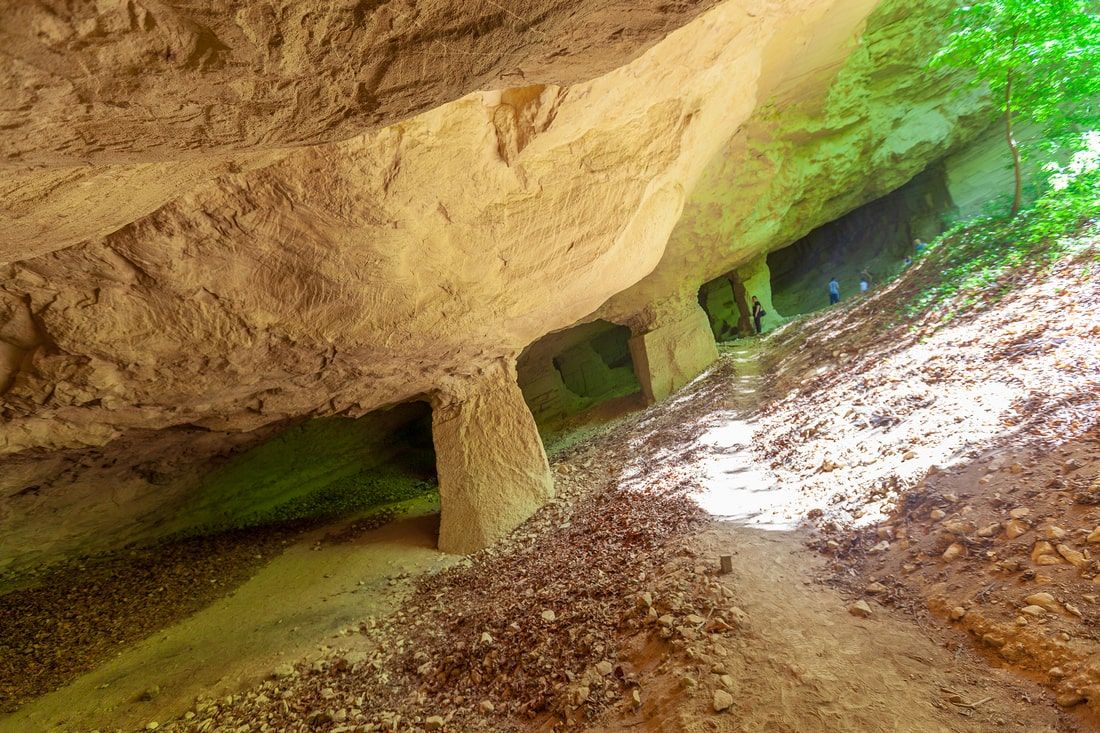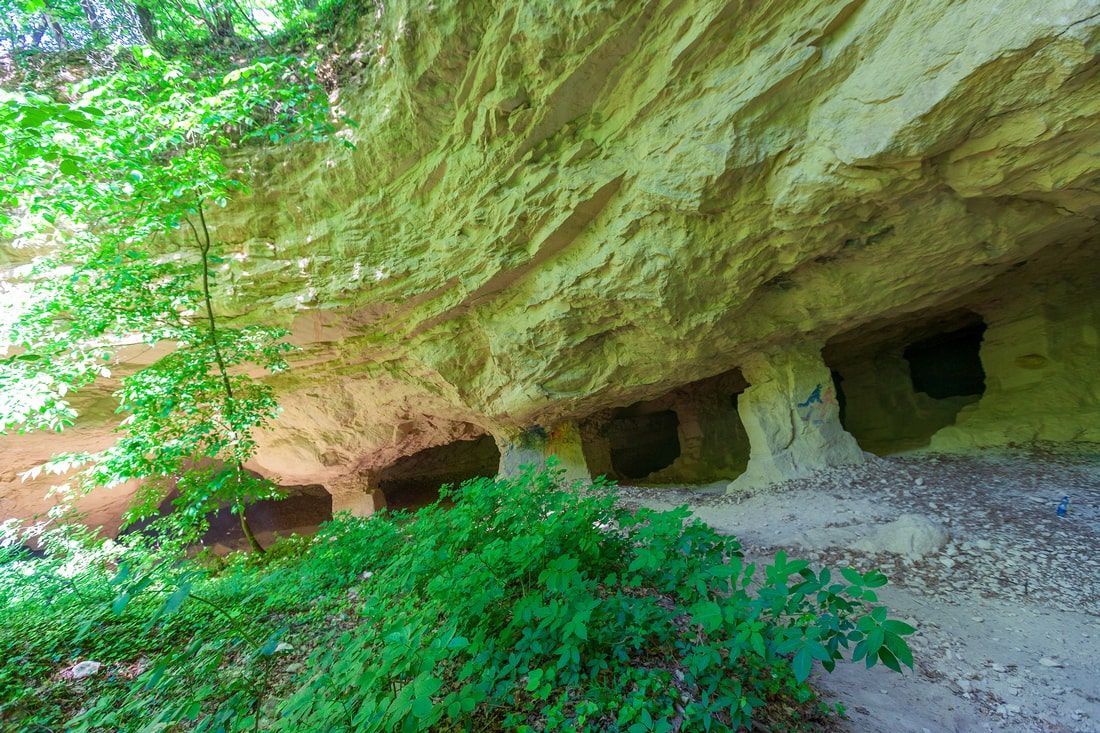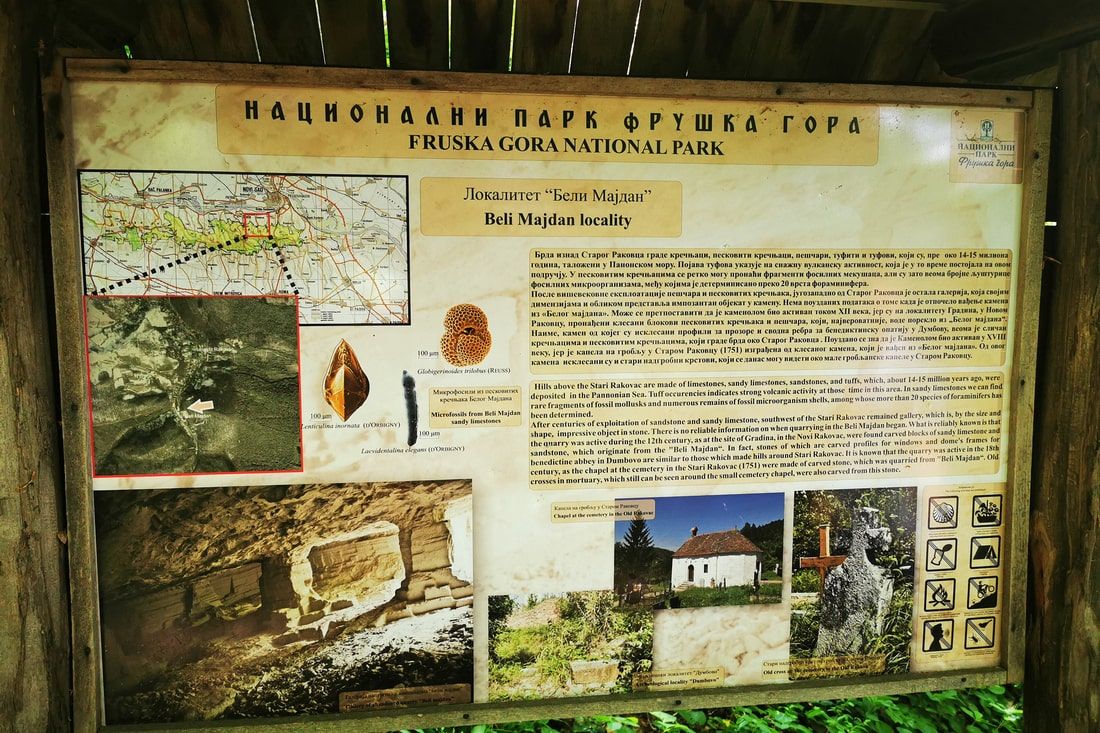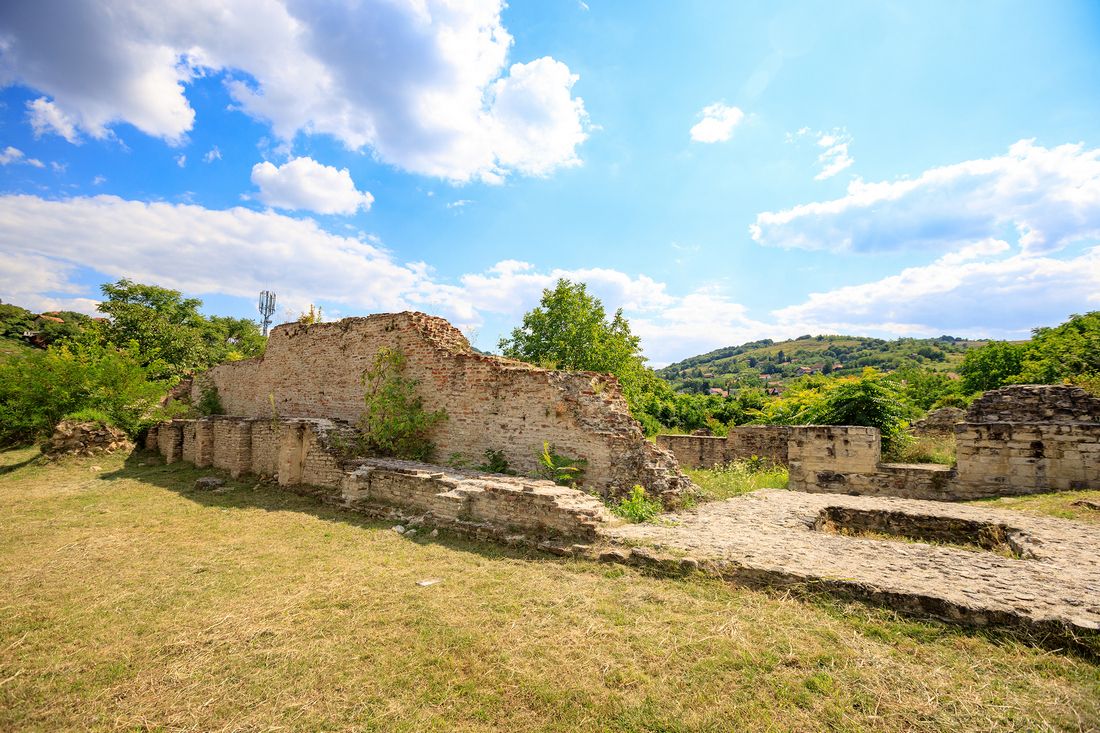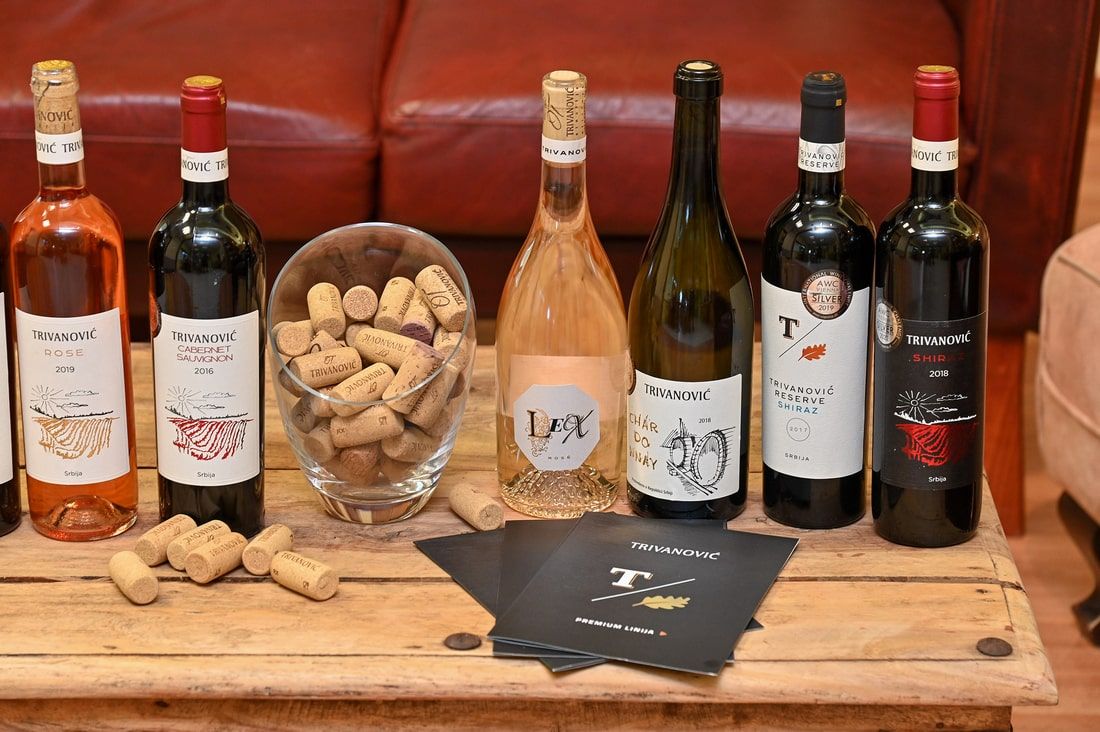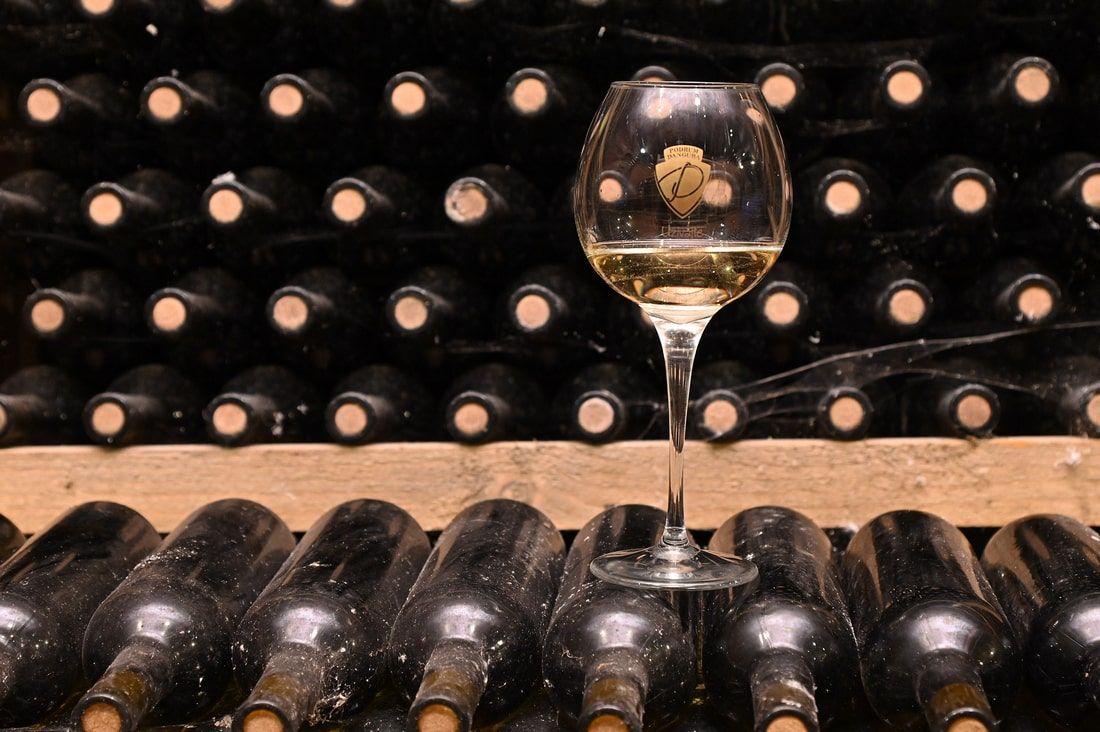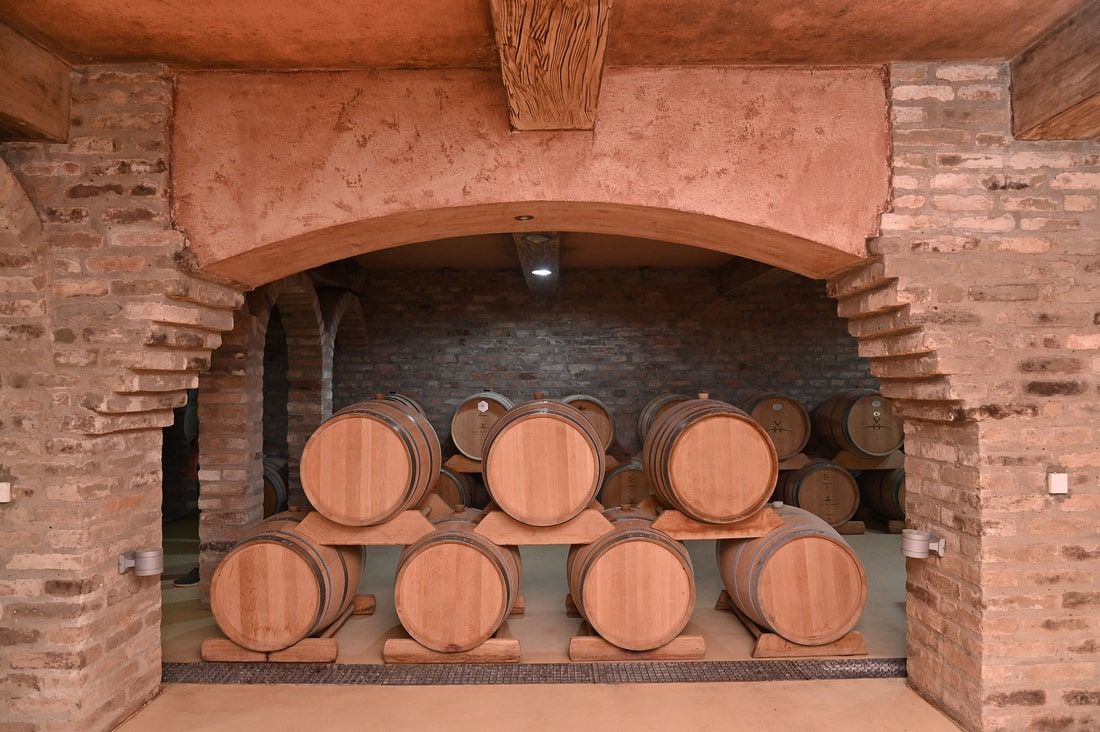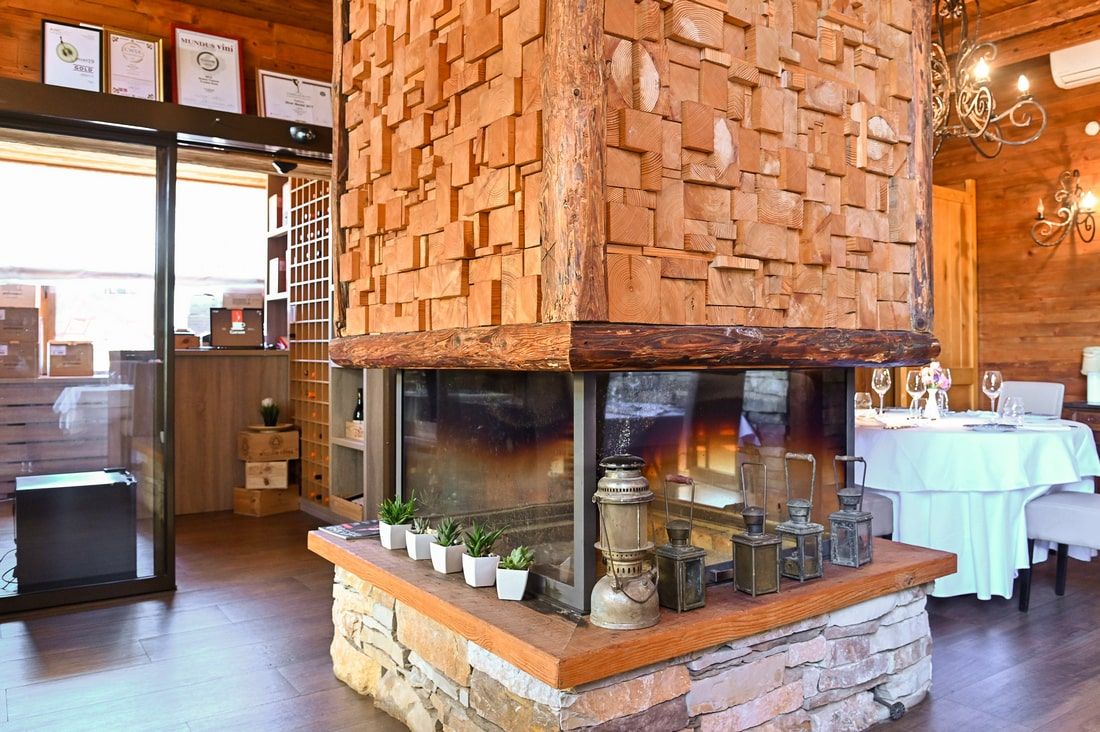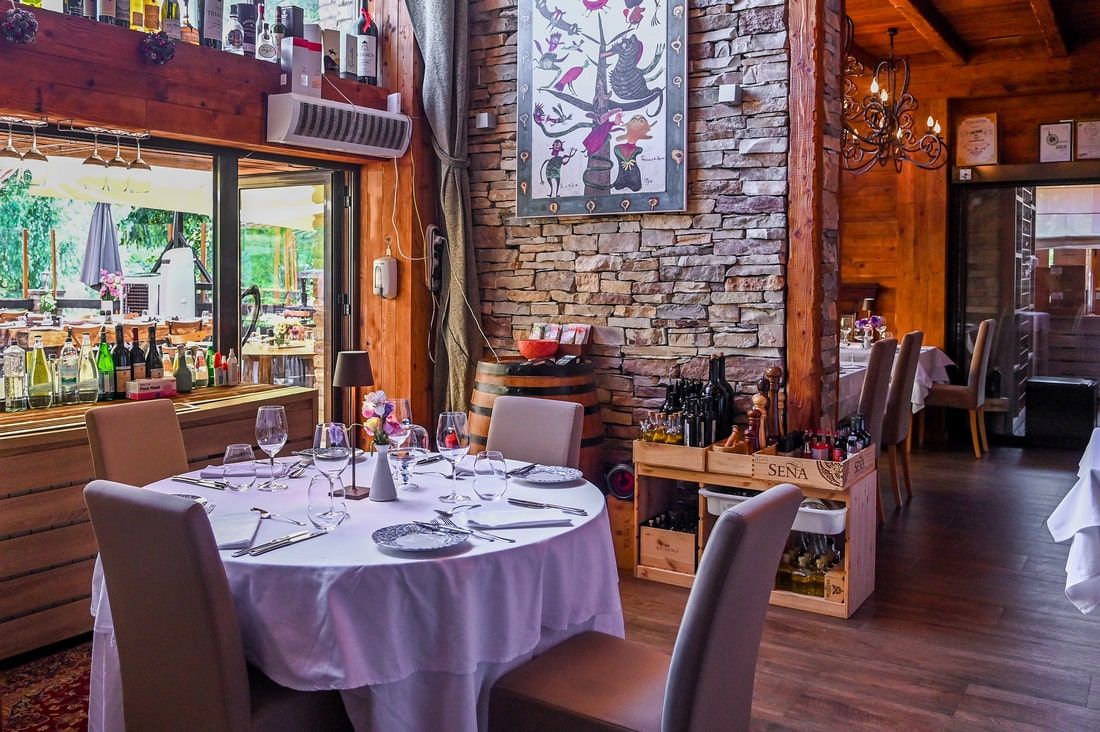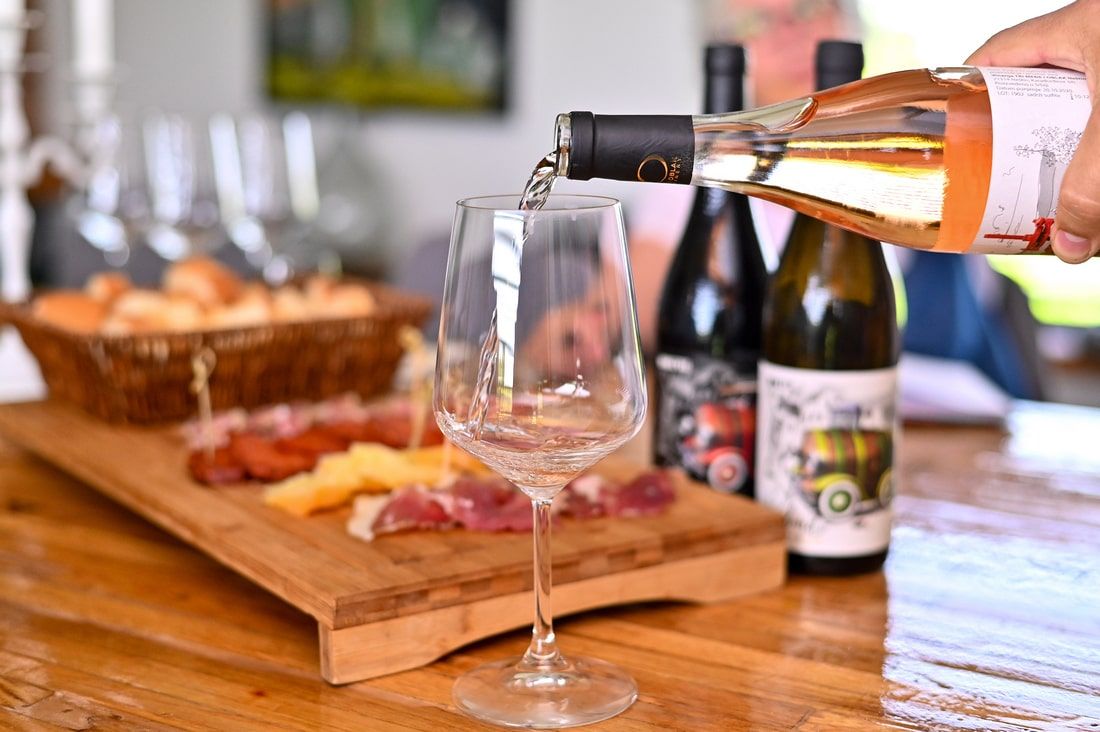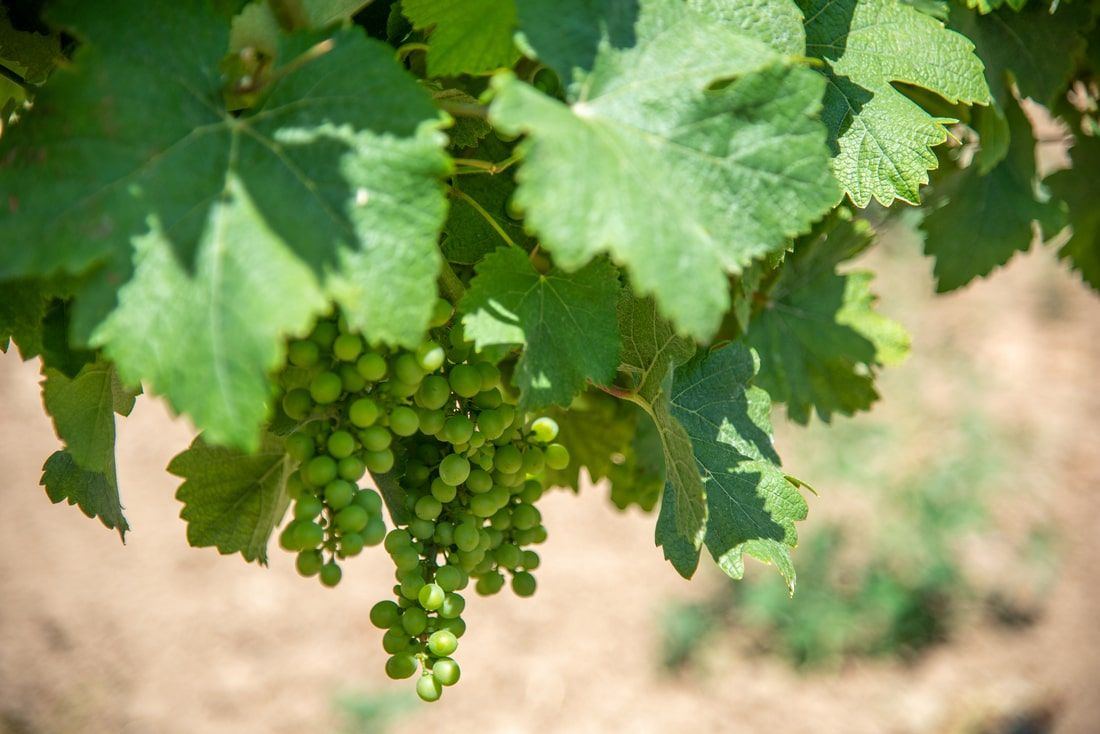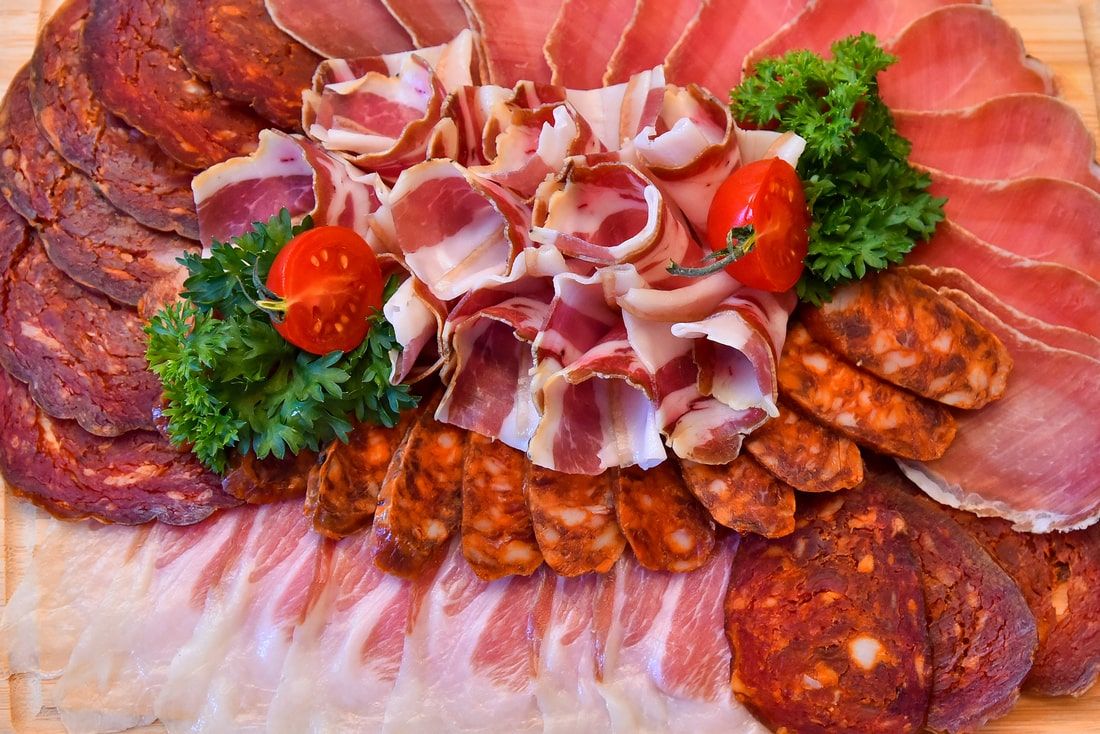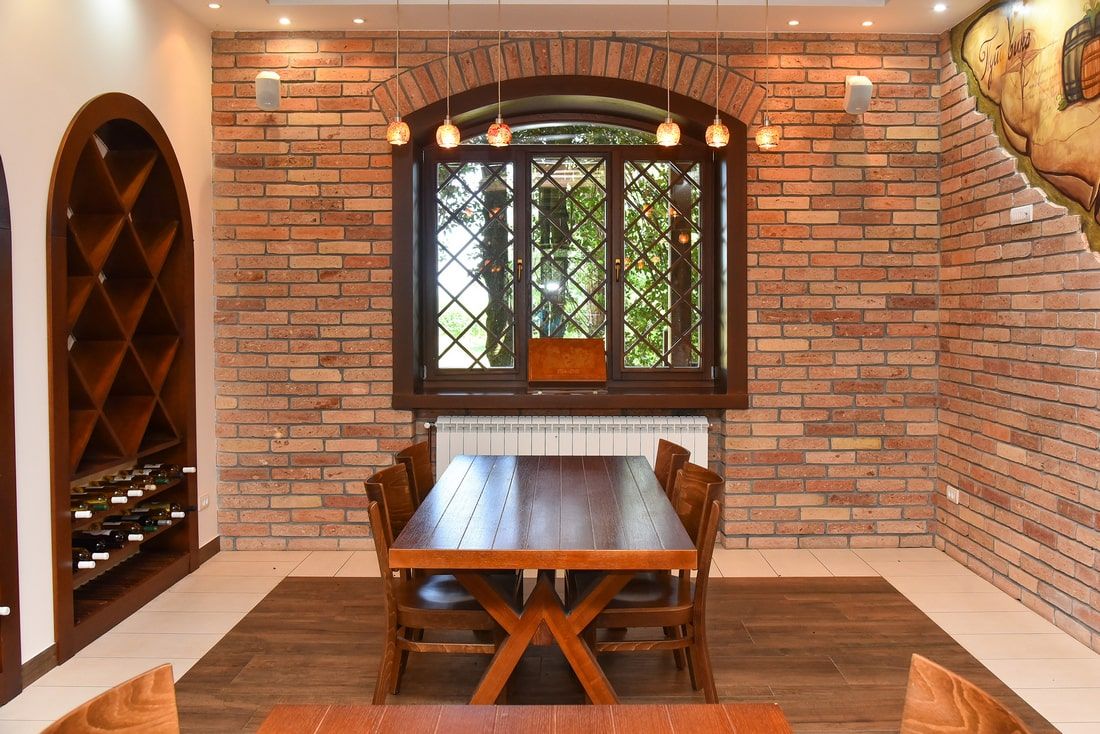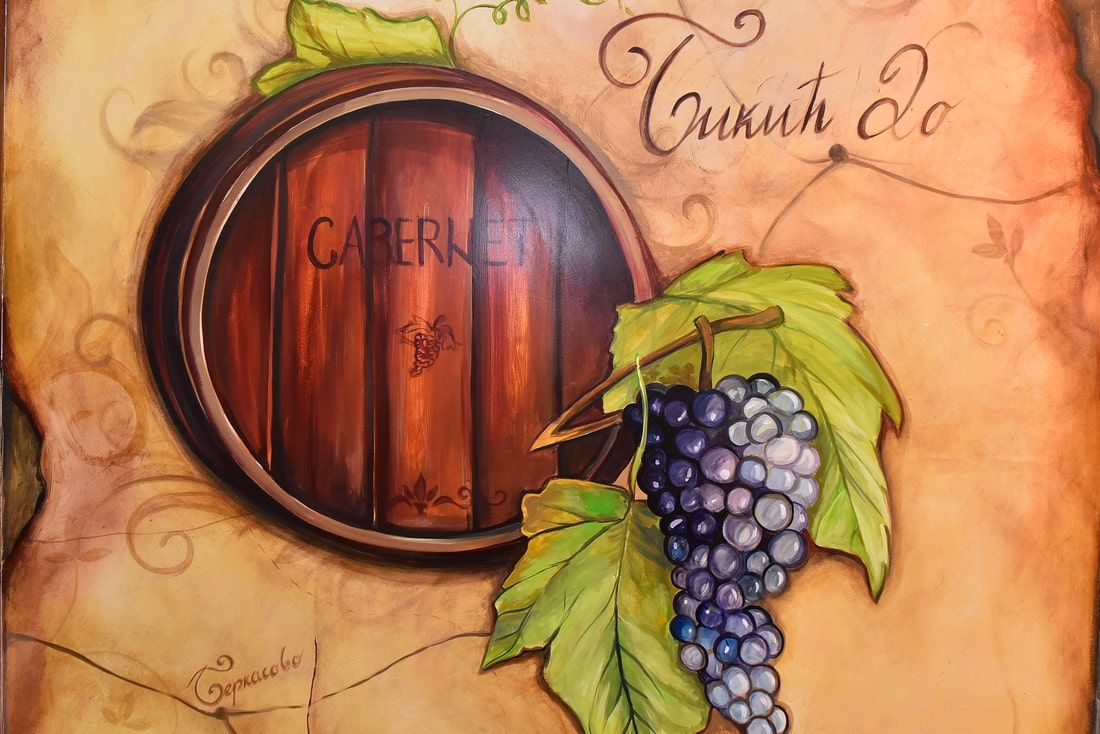52 Weekends - March
Something about palaces and houses in Sremski Karlovci
In the wider area around Branko Radičević’s Square, there are materialized evidences of the development of Serbian civil society from the 17th to the 20th century. Many will therefore wonder about the history of Karlovci private houses of obvious beauty and significance. One in a series of houses on the main square is the house where the architect Vladimir Nikolić lived and died. He was the builder of many buildings in Sremski Karlovci, throughout Vojvodina, even in Budim and Vukovar. Built in 1772 in the shape of the letter “L”, the house still captivates with its baroque beauty.
Not far from the main square is the house of Dimitrije Anastasijević Sabov, built in 1790, and today recognizable by the Rococo facade with many decorative elements. The house of the Strasser family, in which the oldest pharmacy in Vojvodina was founded, stands out for its beauty and significance. The pharmacy, which has preserved an interior from the middle of the 19th century made in Venice, was called “Kod zlatnog orla” (“At the Golden Eagle’s”) until the World War II. The houses of the Matić, Ćirić, and Simeonović-Čokić families, as well as the one of Ljudevit Auer, in which Branko Radičević lived, belong to a number of important Karlovci buildings.
Pavle M. Strasser left the data on how beggars, poor occasional travellers and seasonal workers lived in the 19th century. Next to the building of today’s Homeland Museum, there was a house called “Herberg”, where you could buy pastries and meat products cheaply, and in a large room you could sleep on straw spread on the floor for only one “krajcara” (“kreutzer” – a small value coin). The users of the “Herberg” had to clean all the streets of the town on Saturday afternoons, and sometimes on Sundays until the service in the churches began.
Text: Gordana Stojaković
Beočin monastery and its surroundings
As with other monasteries at Fruška Gora, the history and legend of the Beočin monastery are mixed into one exciting story.
The first written data about the monastery, whose modern church is dedicated to the Christ’s Ascension, date back to the 16th century. History records the fact that monks from Rača on the Drina arrived in it at the end of the 17th century. The construction of the new church began in the first half of the 18th century, and the sanctimonious Serbs from Stari Futog, Novi Sad and Čerević should be attributed the merit for that.
The iconostasis from the 18th century is the work of Dimitrije Bačević and Teodor Dimitrijević Kračun, and the throne icons were painted by Janko Halkozović. In 1815, the relics of St. Stephen the First-Crowned were transferred here from the Fenek monastery. The monastery was looted by the Ustashas during the World War II, including a part of the icons from the iconostasis. The poet Jovan Grčić Milenko and Bishop Varnava (Nastić), who was canonized in 2004, are buried in the monastery.
Many visitors can be surprised and intrigued by the park on the south side of the monastery complex. There are data that it was designed and realized by gardeners who arrived from Paris, who also maintained the Versailles Park. The paths in the park, the fountain and the small pool are just a hint of a former beauty.
The most solemn impression is provided by the chapel erected in 1905 according to the project of the great builder of Sremski Karlovci, Vladimir Nikolić, which is not open for visits. Exploring the surroundings will definitely lead you to the local cuisine restaurant “Beli čin”, a famous place for nature lovers, family trips, gourmets and hedonists.
Text: Gordana Stojaković
Fruška Gora – towards Irig
The road to Irig can be both relaxation and inspiration. Irig is an old settlement, once a rich and wine-famous centre of Fruška Gora, the flourishing of which was stopped by the plague, and then by phylloxera. The town has been renovated in recent decades and shows that the old capital of Fruška Gora shines with new hopes. The renovated Irig urban core with Baroque, Classicist and Secession houses, its beautiful Orthodox temples dedicated to St. Theodore Tyrone, the Assumption of the Holy Virgin Mary and Saint Nicholas are worth seeing.
The tourist economy of Irig is being renewed, and if you decide to stay, you will be able to stay in Milin lagum (Mila’s Wine Cellar) or Fruška Gora Guesthouse. Irig wine story is represented by Mačkov podrum (Mačak’s Wine Cellar) and Vinska kuća Kovačević (Kovačević Wine House) wineries. The road from Irig can take you to Perkov salaš (Perkov’s “salaš” farmstead) in Neradin, or to a small monastery tour: Novo and Staro Hopovo, Grgeteg, Velika Remeta and Krušedol. If you decide to go from Irig to Iriški venac and visit Novo Hopovo, do not miss the opportunity to walk to Stari Hopovo. A three-kilometre journey can be a pilgrimage – if you so choose.
Tourism Organisation of Irig Municipality – http://www.turorgirig.org.rs
Text: Gordana Stojaković
Tourist pictures of Rakovac
Rakovac is not a unique settlement. Stari Rakovac, a settlement of monastery estate residents, was destroyed during the World War II, and a new one was formed a few miles north. The suffering of the settlement and its residents is written through the Quarry Memorial (resembling a massive tower), dedicated to the fallen fighters and victims of fascism and the Memorial “Stručica” (of unusual visual solution), dedicated to the perished group of heroes-patriots.
The multi-layered Rakovac archaeological site Gradina – Dombo is not arranged for tourist visits. The oldest layer of the site consists of the remains of earthen fortifications from the Iron Age, while in the younger strata there are the remains from the Roman period, the remains of the medieval church – the first one being the Romanesque and the second Gothic, and finally the remains of Benedictine monastery surrounded by ramparts that was destroyed in the 16th century. Among the movable valuables found at this site there is also a collection of Byzantine bronze icons from the era of the Comnenus dynasty (1081-1204), which is preserved in the Museum of Vojvodina.
However, when you think about the tourist values of this settlement, then the choice most often falls on the Serbian Orthodox monastery Rakovac. According to tradition, it was built by the great chamberlain of the despot Jovan Branković, Raka Milošević, but the first written information about it dates back to 1545. The monastery church is dedicated to the Holy Healers. The Turks destroyed the monastery at the end of the 17th century, but it was soon rebuilt. The monastery was known as a cultural and rewriting centre where Dušan’s Code and handwritten Rakovac Srbljak were rewritten.
The possibility of walking to the Beli Majdan cave or enjoying in wines and food at Vinarija Salaksija (Salaxia Winery) should not be left out.
Text: Gordana Stojaković
Following the traces of the family Odeskalki
The western part of Fruška Gora, between the Danube in the north and the border with Croatia in the west, abounds in natural beauties and monumental heritage, among which we can single out the forest areas with Erdevik hunting ground Vorovo, lakes Moharač, Bruje and Sot, and created heritage where Serbian Orthodox monasteries Đipša, Petkovica, Kuveždin and Šišatovac stand out.
This is also a recognized wine-growing region, known for the fact that vineyards and wine cellars of the Italian aristocratic family Odeskalki used to be there. Traces of the Odeskalkis from Susek to Erdevik and Bikić Do are still visible today, whether it is about memory, tradition, or material testimonies of their Srem wine experience. Many winemakers will refer to the fact that modern vineyards are located exactly where those of Odeskalkis, and in some places there will be masterfully designed and built wine cellars, and a wine villa with a park in Bikić Do, which all together hints at the former beauty and wealth of the privileged nobility due to which special settlements of winegrowers were formed for those who created that beauty and wealth. Such settlements are Bikić Do and Stara Bingula.
On the slopes of western Fruška Gora there are more and more vineyards today and excellent wines made from the following assortment of grapes: Italian Riesling, Rhine Riesling, Chardonnay, Sauvignon Blanc, Traminer, Pinot Gris, Merlot, Muscat Hamburg, Cabernet Sauvignon, Vranac, Tamjanika, Shiraz , Frankovka, Pinot Noir, Probus, Marselan, etc. If wine is a drink from paradise, then you can try and buy it at Vinarija Dudan (Dudan Winery) in Susek, Tri međe i oblak (Three Borders and a Cloud wineries), Gaston Wine Winery in Neštin, Vinarija Trivanović (Trivanović Winery), Vinarija Podrum Danguba (Danguba Winery and Wine Cellar), Vinarija Molovin (Molovin Winery) in Šid, Vinarija Vinat (Vinat Winery), Vinarija Erdevik (Erdevik Winery), Salaš – Vinarija Brestovački (Brestovački Salaš – Winery) in Erdevik, and Vinarija Ilić-Nijemčević (Ilić-Nijemčević Winery) in Bikić Do.
The traditional Srem Vinijada has been organized in Berkasovo in honour of wine and winemakers for two decades now, where wine producers gather every February to exchange experiences and evaluate wines.
Text: Gordana Stojaković

